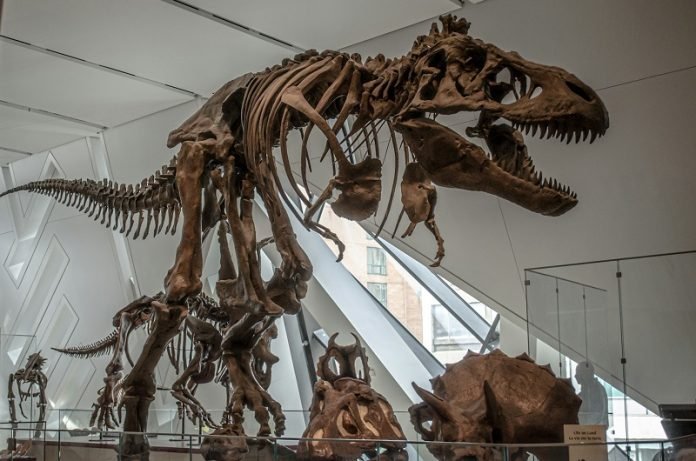
In a fascinating turn of events, scientists have discovered that what was once thought to be young T. rex fossils are actually from a completely different, smaller species of tyrannosaur named Nanotyrannus lancensis.
This discovery, made by Dr. Nick Longrich from the University of Bath and Dr. Evan Saitta from the University of Chicago, marks a significant shift in our understanding of dinosaur diversity.
The Nanotyrannus mystery began with a skull found in Montana in 1942. For years, paleontologists debated whether this skull belonged to a separate species or was simply a juvenile T. rex.
This confusion was due to the similarities between the two dinosaurs, but there were also noticeable differences, such as Nanotyrannus having narrower jaws, longer legs, and bigger arms.
The breakthrough came when Longrich and Saitta re-examined the fossils, focusing on their growth rings.
These rings, similar to those found in trees, revealed that the bones belonged to nearly full-sized animals, not rapidly growing youngsters.
The researchers’ analysis suggested that Nanotyrannus would have reached a maximum size of about 900–1,500 kilograms and five meters, which is significantly smaller than the massive T. rex, known to grow over 8,000 kilograms and reach nine meters or more.
The findings, published in Fossil Studies, highlight a crucial aspect: if these were young T. rex fossils, they would have shown rapid growth.
However, the data consistently showed lower growth rates, leading to the conclusion that these fossils were not young T. rex but a different species.
Supporting this conclusion, the researchers found no fossils that displayed characteristics of both Nanotyrannus and T. rex. Each fossil could be clearly identified as belonging to one species or the other. This clarity was crucial, as the existence of transitional fossils would suggest a single species at different life stages.
Interestingly, the researchers also addressed a long-standing question in paleontology: why had no one found a young T. rex fossil?
The answer lay in an overlooked specimen, stored in a San Francisco museum, which Longrich and Saitta identified as a young Tyrannosaurus. This discovery, represented by a single skull bone, confirmed that juvenile T. rex did exist, but they are incredibly rare.
The study also highlights significant differences between Nanotyrannus and T. rex, particularly in their physical build. Nanotyrannus had longer arms and was more lightly built, suggesting it relied on speed rather than the size and strength characteristic of T. rex.
These differences indicate that Nanotyrannus could belong to its own family of predatory dinosaurs, separate from the Tyrannosauridae family, which includes T. rex.
This new understanding of Nanotyrannus challenges previous beliefs and suggests that the diversity of dinosaurs might be greater than previously thought. The study also raises questions about our knowledge of other dinosaurs and the challenges of identifying species based on incomplete skeletons.
In summary, the research by Longrich and Saitta not only resolves a long-standing debate in paleontology but also opens new
doors to understanding dinosaur diversity. It’s a reminder of the evolving nature of scientific knowledge and the excitement of uncovering the mysteries of our planet’s ancient past.
This discovery about Nanotyrannus is a testament to the dedication and careful analysis of scientists working to piece together the complex puzzle of Earth’s prehistoric life.



